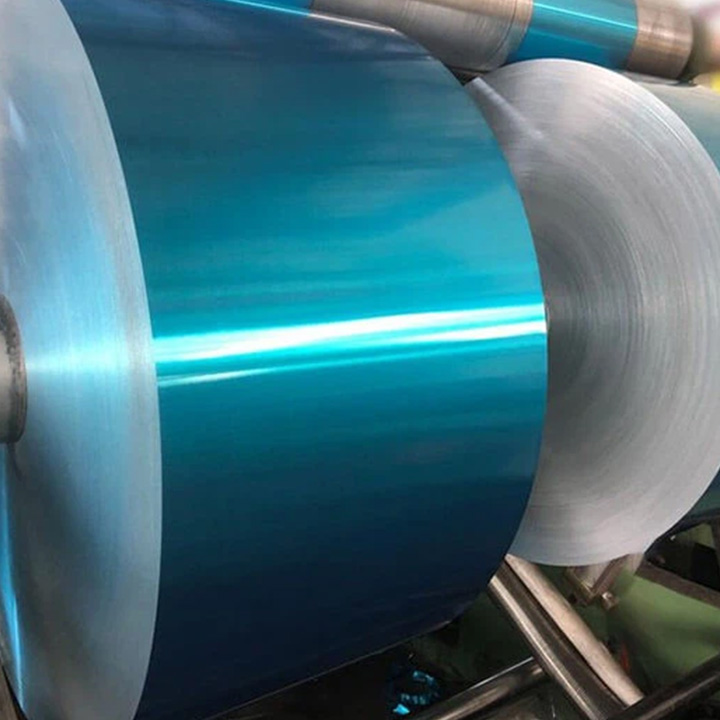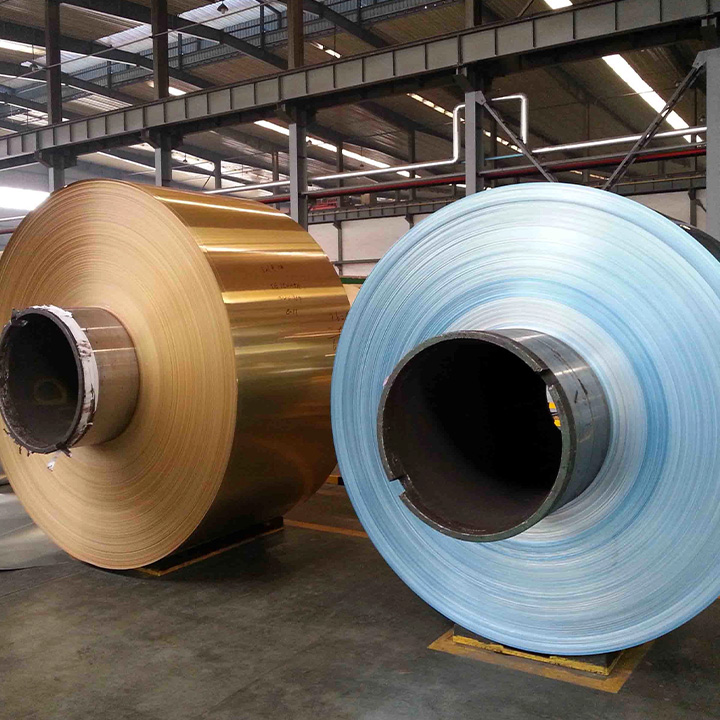- +86 188 5310 8009
- info@northchinametal.com
- Shuntai North Road, High-tech Zone, Jinan City, Shandong Province
Call Us
Mail To
Address
Shuntai North Road, High-tech Zone, Jinan City, Shandong Province
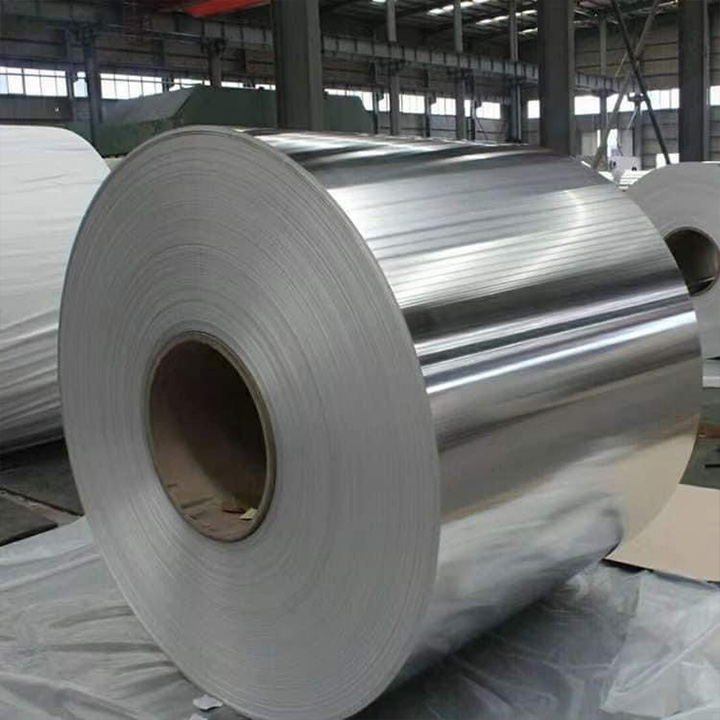
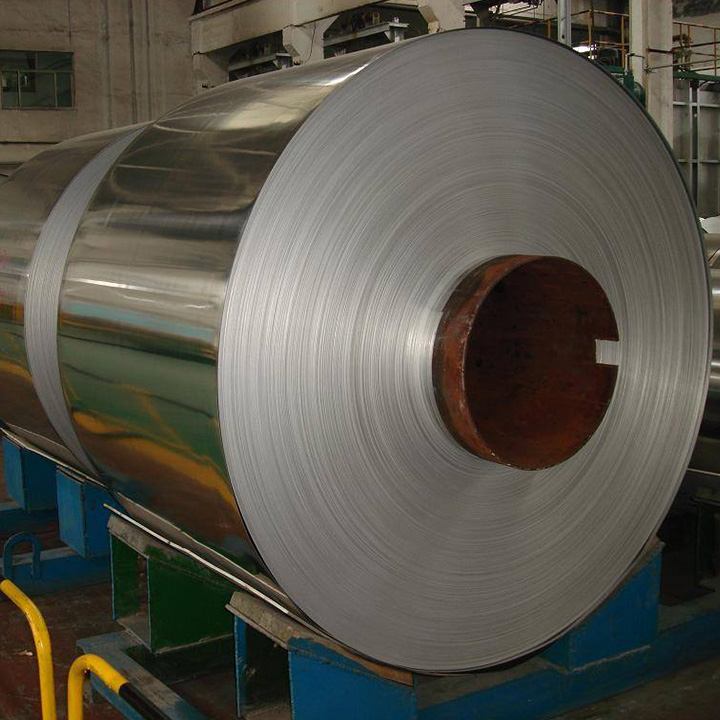
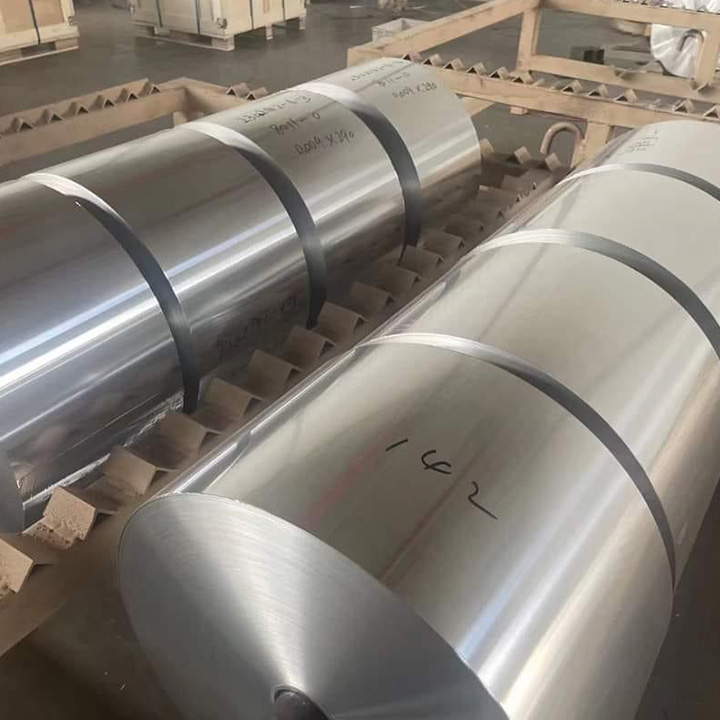
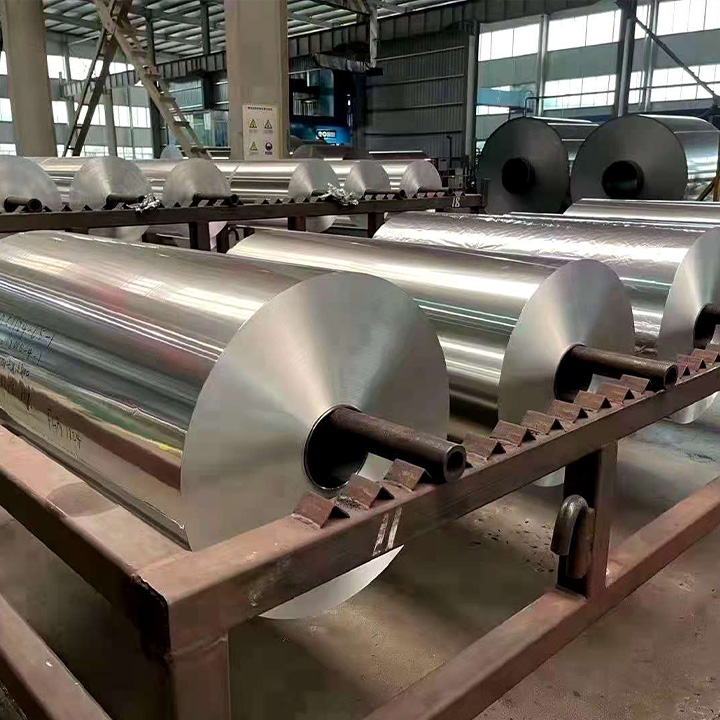




Aluminum foil roll
Aluminum foil is widely used in food, beverages, cigarettes, medicines, photographic plates, household necessities, etc. due to its excellent properties. It is usually used as their packaging materials; electrolytic capacitor materials; insulation materials for buildings, vehicles, ships, houses, etc.; it can also be used as decorative gold and silver wires, wallpapers, and decorative trademarks for various stationery prints and light industrial products.
Product Parameters
Standard | GB/T3190-2008,GB/T3880-2006,ASTM B209,JIS H4000-2006,etc | |
Material | 8011 8006 8079 1235 3003 3004 | |
Size | Thickness | 6mic-200mic |
Width | 300mm, 450mm or customized | |
Length | as required. | |
Quality control | Mill Test Certification is supplied with shipment,Third Part Inspection is acceptable. | |
Surface | Bright,polished,hair line,brush,sand blast,checkered,embossed,etching,etc | |
Aluminum foil classification
Thickness
Aluminum foil can be divided into thick foil, single zero foil and double zero foil according to the thickness difference.
① Thick foil (“heavy gauge foil”): Foil with a thickness of 0.1~0.2mm.
② Single zero foil (“medium gauge foil”): Foil with a thickness of 0.01mm and less than 0.1mm/.
③ Double zero foil (“light gauge foil”): The so-called double zero foil is a foil with two zeros after the decimal point when its thickness is measured in mm, usually aluminum foil with a thickness of less than 0.01, that is, aluminum foil of 0.005~0.009mm. In foreign countries, aluminum foil with a thickness of ≤40ltm is sometimes called “light gauge foil”, and aluminum foil with a thickness of >40btm is collectively called “heavy gauge foil”.
Shape
Aluminum foil can be divided into roll aluminum foil and sheet aluminum foil according to its shape. Most of the aluminum foil deep-processing raw materials are supplied in rolls, and only a few handicraft packaging occasions use sheet aluminum foil.
Aluminum foil can be divided into hard foil, semi-hard foil and soft foil according to its state.
①Hard foil: Aluminum foil that has not been softened (annealed) after rolling has residual oil on the surface without degreasing. Therefore, hard foil must be degreased before printing, laminating, and coating. If it is used for forming, it can be used directly.
②Semi-hard foil: Aluminum foil with a hardness (or strength) between hard foil and soft foil is usually used for forming.
③Soft foil: Aluminum foil that has been fully annealed after rolling and becomes soft, with a soft material and no residual oil on the surface. Most application areas, such as packaging, laminating, and electrical materials, use soft foil.
Surface state
Aluminum foil can be divided into one-sided smooth aluminum foil and two-sided smooth aluminum foil according to its surface state.
① Single-sided smooth aluminum foil: Double-rolled aluminum foil, one side is bright and the other side is dark after rolling. Such aluminum foil is called one-sided smooth aluminum foil. The thickness of one-sided smooth aluminum foil usually does not exceed 0.025mm.
② Double-sided smooth aluminum foil: A single rolled aluminum foil, both sides of which are in contact with the roller, the two sides of the aluminum foil are divided into mirror-finished two-sided smooth aluminum foil and ordinary two-sided smooth aluminum foil due to the different surface roughness of the roller. The thickness of two-sided smooth aluminum foil is generally not less than 0.01mm.
Processing state
Aluminum foil can be divided into plain foil, embossed foil, composite foil, coated foil, colored foil and printed foil according to the processing state.
① Plain foil: Aluminum foil that is not processed after rolling, also known as plain foil.
② Embossed foil: Aluminum foil with various patterns on the surface.
③ Composite foil: A composite aluminum foil formed by laminating aluminum foil with paper, plastic film, and cardboard.
④ Coated foil: Aluminum foil with various resins or paints on the surface.
⑤ Colored aluminum foil: Aluminum foil with a single color on the surface. ⑥ Printed aluminum foil: Aluminum foil with various patterns, designs, texts or pictures printed on the surface, which can be one color, up to 12 colors.
Soft aluminum foil can also be further pressed into 40 foil for high-end decoration.
Aluminum foil characteristics
Aluminum foil has a clean, hygienic and shiny appearance. It can be integrated with many other packaging materials to make integrated packaging materials. The printing effect of aluminum foil surface is better than other materials. In addition, aluminum foil has the following characteristics:
(1) The surface of aluminum foil is extremely clean and hygienic. No bacteria or microorganisms can grow on its surface.
(2) Aluminum foil is a non-toxic packaging material. It can be in direct contact with food without any harm to human health.
(3) Aluminum foil is a tasteless and odorless packaging material. It will not make the packaged food have any peculiar smell.
(4) If aluminum foil itself is non-volatile, it itself and the packaged food will never dry or shrink.
(5) Whether at high or low temperatures, aluminum foil will not have grease penetration.
(6) Aluminum foil is an opaque packaging material, so it is a good packaging material for products exposed to sunlight, such as margarine.
(7) Aluminum foil has good plasticity, so it can be used to package products of various shapes. It can also be made into containers of various shapes.
(8) Aluminum foil has high hardness and tensile strength, but its tear strength is low, so it is very easy to tear.
(9) Aluminum foil itself cannot be heat-sealed, and a heat-resistant material such as PE must be applied to its surface to heat-seal it.
(10) Aluminum foil may have adverse reactions when it comes into contact with other heavy metals or heavy metals.
Description
Product Parameters
Standard | GB/T3190-2008,GB/T3880-2006,ASTM B209,JIS H4000-2006,etc | |
Material | 8011 8006 8079 1235 3003 3004 | |
Size | Thickness | 6mic-200mic |
Width | 300mm, 450mm or customized | |
Length | as required. | |
Quality control | Mill Test Certification is supplied with shipment,Third Part Inspection is acceptable. | |
Surface | Bright,polished,hair line,brush,sand blast,checkered,embossed,etching,etc | |
Aluminum foil classification
Thickness
Aluminum foil can be divided into thick foil, single zero foil and double zero foil according to the thickness difference.
① Thick foil (“heavy gauge foil”): Foil with a thickness of 0.1~0.2mm.
② Single zero foil (“medium gauge foil”): Foil with a thickness of 0.01mm and less than 0.1mm/.
③ Double zero foil (“light gauge foil”): The so-called double zero foil is a foil with two zeros after the decimal point when its thickness is measured in mm, usually aluminum foil with a thickness of less than 0.01, that is, aluminum foil of 0.005~0.009mm. In foreign countries, aluminum foil with a thickness of ≤40ltm is sometimes called “light gauge foil”, and aluminum foil with a thickness of >40btm is collectively called “heavy gauge foil”.
Shape
Aluminum foil can be divided into roll aluminum foil and sheet aluminum foil according to its shape. Most of the aluminum foil deep-processing raw materials are supplied in rolls, and only a few handicraft packaging occasions use sheet aluminum foil.
Aluminum foil can be divided into hard foil, semi-hard foil and soft foil according to its state.
①Hard foil: Aluminum foil that has not been softened (annealed) after rolling has residual oil on the surface without degreasing. Therefore, hard foil must be degreased before printing, laminating, and coating. If it is used for forming, it can be used directly.
②Semi-hard foil: Aluminum foil with a hardness (or strength) between hard foil and soft foil is usually used for forming.
③Soft foil: Aluminum foil that has been fully annealed after rolling and becomes soft, with a soft material and no residual oil on the surface. Most application areas, such as packaging, laminating, and electrical materials, use soft foil.
Surface state
Aluminum foil can be divided into one-sided smooth aluminum foil and two-sided smooth aluminum foil according to its surface state.
① Single-sided smooth aluminum foil: Double-rolled aluminum foil, one side is bright and the other side is dark after rolling. Such aluminum foil is called one-sided smooth aluminum foil. The thickness of one-sided smooth aluminum foil usually does not exceed 0.025mm.
② Double-sided smooth aluminum foil: A single rolled aluminum foil, both sides of which are in contact with the roller, the two sides of the aluminum foil are divided into mirror-finished two-sided smooth aluminum foil and ordinary two-sided smooth aluminum foil due to the different surface roughness of the roller. The thickness of two-sided smooth aluminum foil is generally not less than 0.01mm.
Processing state
Aluminum foil can be divided into plain foil, embossed foil, composite foil, coated foil, colored foil and printed foil according to the processing state.
① Plain foil: Aluminum foil that is not processed after rolling, also known as plain foil.
② Embossed foil: Aluminum foil with various patterns on the surface.
③ Composite foil: A composite aluminum foil formed by laminating aluminum foil with paper, plastic film, and cardboard.
④ Coated foil: Aluminum foil with various resins or paints on the surface.
⑤ Colored aluminum foil: Aluminum foil with a single color on the surface. ⑥ Printed aluminum foil: Aluminum foil with various patterns, designs, texts or pictures printed on the surface, which can be one color, up to 12 colors.
Soft aluminum foil can also be further pressed into 40 foil for high-end decoration.
Aluminum foil characteristics
Aluminum foil has a clean, hygienic and shiny appearance. It can be integrated with many other packaging materials to make integrated packaging materials. The printing effect of aluminum foil surface is better than other materials. In addition, aluminum foil has the following characteristics:
(1) The surface of aluminum foil is extremely clean and hygienic. No bacteria or microorganisms can grow on its surface.
(2) Aluminum foil is a non-toxic packaging material. It can be in direct contact with food without any harm to human health.
(3) Aluminum foil is a tasteless and odorless packaging material. It will not make the packaged food have any peculiar smell.
(4) If aluminum foil itself is non-volatile, it itself and the packaged food will never dry or shrink.
(5) Whether at high or low temperatures, aluminum foil will not have grease penetration.
(6) Aluminum foil is an opaque packaging material, so it is a good packaging material for products exposed to sunlight, such as margarine.
(7) Aluminum foil has good plasticity, so it can be used to package products of various shapes. It can also be made into containers of various shapes.
(8) Aluminum foil has high hardness and tensile strength, but its tear strength is low, so it is very easy to tear.
(9) Aluminum foil itself cannot be heat-sealed, and a heat-resistant material such as PE must be applied to its surface to heat-seal it.
(10) Aluminum foil may have adverse reactions when it comes into contact with other heavy metals or heavy metals.
Products
Related Products
Related products
Product Parameters
Standard | GB/T3190-2008,GB/T3880-2006,ASTM B209,JIS H4000-2006,etc | |
Material | 8011 8006 8079 1235 3003 3004 | |
Size | Thickness | 6mic-200mic |
Width | 300mm, 450mm or customized | |
Length | as required. | |
Quality control | Mill Test Certification is supplied with shipment,Third Part Inspection is acceptable. | |
Surface | Bright,polished,hair line,brush,sand blast,checkered,embossed,etching,etc | |
Aluminum foil classification
Thickness
Aluminum foil can be divided into thick foil, single zero foil and double zero foil according to the thickness difference.
① Thick foil (“heavy gauge foil”): Foil with a thickness of 0.1~0.2mm.
② Single zero foil (“medium gauge foil”): Foil with a thickness of 0.01mm and less than 0.1mm/.
③ Double zero foil (“light gauge foil”): The so-called double zero foil is a foil with two zeros after the decimal point when its thickness is measured in mm, usually aluminum foil with a thickness of less than 0.01, that is, aluminum foil of 0.005~0.009mm. In foreign countries, aluminum foil with a thickness of ≤40ltm is sometimes called “light gauge foil”, and aluminum foil with a thickness of >40btm is collectively called “heavy gauge foil”.
Shape
Aluminum foil can be divided into roll aluminum foil and sheet aluminum foil according to its shape. Most of the aluminum foil deep-processing raw materials are supplied in rolls, and only a few handicraft packaging occasions use sheet aluminum foil.
Aluminum foil can be divided into hard foil, semi-hard foil and soft foil according to its state.
①Hard foil: Aluminum foil that has not been softened (annealed) after rolling has residual oil on the surface without degreasing. Therefore, hard foil must be degreased before printing, laminating, and coating. If it is used for forming, it can be used directly.
②Semi-hard foil: Aluminum foil with a hardness (or strength) between hard foil and soft foil is usually used for forming.
③Soft foil: Aluminum foil that has been fully annealed after rolling and becomes soft, with a soft material and no residual oil on the surface. Most application areas, such as packaging, laminating, and electrical materials, use soft foil.
Surface state
Aluminum foil can be divided into one-sided smooth aluminum foil and two-sided smooth aluminum foil according to its surface state.
① Single-sided smooth aluminum foil: Double-rolled aluminum foil, one side is bright and the other side is dark after rolling. Such aluminum foil is called one-sided smooth aluminum foil. The thickness of one-sided smooth aluminum foil usually does not exceed 0.025mm.
② Double-sided smooth aluminum foil: A single rolled aluminum foil, both sides of which are in contact with the roller, the two sides of the aluminum foil are divided into mirror-finished two-sided smooth aluminum foil and ordinary two-sided smooth aluminum foil due to the different surface roughness of the roller. The thickness of two-sided smooth aluminum foil is generally not less than 0.01mm.
Processing state
Aluminum foil can be divided into plain foil, embossed foil, composite foil, coated foil, colored foil and printed foil according to the processing state.
① Plain foil: Aluminum foil that is not processed after rolling, also known as plain foil.
② Embossed foil: Aluminum foil with various patterns on the surface.
③ Composite foil: A composite aluminum foil formed by laminating aluminum foil with paper, plastic film, and cardboard.
④ Coated foil: Aluminum foil with various resins or paints on the surface.
⑤ Colored aluminum foil: Aluminum foil with a single color on the surface. ⑥ Printed aluminum foil: Aluminum foil with various patterns, designs, texts or pictures printed on the surface, which can be one color, up to 12 colors.
Soft aluminum foil can also be further pressed into 40 foil for high-end decoration.
Aluminum foil characteristics
Aluminum foil has a clean, hygienic and shiny appearance. It can be integrated with many other packaging materials to make integrated packaging materials. The printing effect of aluminum foil surface is better than other materials. In addition, aluminum foil has the following characteristics:
(1) The surface of aluminum foil is extremely clean and hygienic. No bacteria or microorganisms can grow on its surface.
(2) Aluminum foil is a non-toxic packaging material. It can be in direct contact with food without any harm to human health.
(3) Aluminum foil is a tasteless and odorless packaging material. It will not make the packaged food have any peculiar smell.
(4) If aluminum foil itself is non-volatile, it itself and the packaged food will never dry or shrink.
(5) Whether at high or low temperatures, aluminum foil will not have grease penetration.
(6) Aluminum foil is an opaque packaging material, so it is a good packaging material for products exposed to sunlight, such as margarine.
(7) Aluminum foil has good plasticity, so it can be used to package products of various shapes. It can also be made into containers of various shapes.
(8) Aluminum foil has high hardness and tensile strength, but its tear strength is low, so it is very easy to tear.
(9) Aluminum foil itself cannot be heat-sealed, and a heat-resistant material such as PE must be applied to its surface to heat-seal it.
(10) Aluminum foil may have adverse reactions when it comes into contact with other heavy metals or heavy metals.

